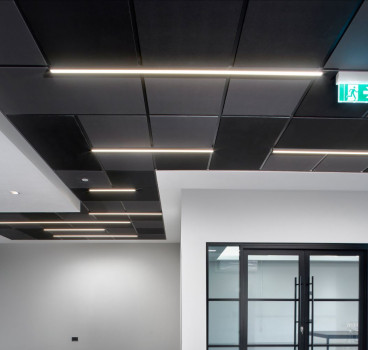5 Game-Changing Robots Making Construction Sites Safer
What if machines could do the most dangerous jobs on a construction site? From demolition to overhead drilling, robots are stepping in to protect workers and boost productivity. A wave of intelligent machinery is reshaping jobsites, replacing high-risk manual routines with data-driven, automated precision.
Below are five technologies that prove AI and robots transform safety culture while easing the mental and physical strain on today’s labor force.
1. Survey Drones: Mapping Sites Safely From the Sky
Fitted with LiDAR payloads, 61-megapixel cameras and RTK GNSS, drones like the WingtraOne Gen II by Wingtra and Mavic 3 Enterprise by DJI can capture orthomosaics at centimetre level and create point clouds in minutes. Scaffolded roof walks — once necessary for progress surveys — become obsolete. Pilots can now operate safely at ground level.
Integrating Edge AI into tech also keeps cameras and drones smart, instantly flagging missing PPE, intrusions or other hazards without cloud delay. Researchers from Turkey demonstrated its viability for construction use by merging a central coordinator, edge technology and a 5G connection — and that is just the beginning.
2. Demolition Robots: Smarter Demolition With Zero Exposure
From drones that scan, let’s look at tech that brings buildings down. Compact robots by Brokk AB can roll through standard doorways and deploy hydraulic breakers, buckets and crushers — controlled from a wireless device up to 300 metres away.
Such demolition robots eliminate crush injuries and exposure to silica dust by letting operators stand outside the exclusion zone. Their electric drives also cut fumes inside enclosed structures, reducing fatigue and improving air quality.
3. Rebar Robots — No More Wire Strain for Workers
TyBot by Advanced Construction Robotics uses computer vision to identify intersections as it runs along temporary rails on rebar decks and ties wires around them autonomously.
Manually tying steel is tedious and repetitive. TyBot can finish up to 1,100 ties per hour — slashing hand strain, kneeling time and the likelihood of slipping on crowded reinforcement mats.
4. Overhead Drilling Bots: Safer Ceilings Without the Strain
Getting workers to go high up is dangerous, not to mention costly and time-consuming. Hilti Jaibot by Hilti Group navigates using LiDAR and references building information models to drill anchor holes in ceilings.
A single charge covers an eight-hour shift, and the robot can print layout marks as it goes. Over-shoulder drilling is a leading cause of vibration injuries and falling debris. Jaibot removes operators from beneath the drill zone, lowering the risk of injuries and long-term disorders.
5. Exosuits: Lift More, Hurt Less
Need to transfer heavy loads in minutes? The battery-powered Sarcos Guardian XO by Palladyne AI — still in a limited testing phase — seeks to amplify human strength by 20. Lifting a 45 kg beam will feel like 2 kg. Its embedded sensors mirror natural movement, and the operator stays mobile for up to two hours per pack.
The Guardian XO reduces back injuries and opens job opportunities for shorter or older workers. It also curbs the mental lapses that trigger accidents by lowering fatigue. Cost and complexity keep this impressive tech on a short run for now, but it’s exciting to know what’s coming.
Before we close our top five, another piece of tech worth the extra mention is Hadrian X. This AI-guided, truck-mounted robo-mason can whip its crane arm around a site to lay concrete blocks with laser precision — in February 2025, it put up the structural walls of a Florida home in a single day. The Hadrian X’s debut with PulteGroup hints at a near future where build times tumble and entire neighborhoods rocket skyward before lunch.
Traditional vs. Robot-Assisted Methods
Here’s a snapshot comparing standard, labor-intensive practices with their robot-powered upgrades across construction tasks.
Construction Task |
Traditional Method |
Robot-Assisted Method |
Site surveying |
Surveyors climb scaffolds/roofs and set up total stations or handheld lasers — data capture takes hours |
Survey drones fly LiDAR/RTK missions from ground control, producing centimetre-level orthomosaics and point clouds in minutes |
Demolition |
Crews operate jackhammers or excavators inside exclusion zones, exposing themselves to falling debris, dust and fumes. |
Demolition robots break, crush and bucket materials via wireless control from metres away, while operators stay outside danger and noise. |
Rebar tying |
Workers bend and kneel to hand-tie hundreds of wire knots per hour, risking repetitive strain injuries. |
Rebar robots use computer vision to locate intersections and tie thousands of knots per hour, while crews supervise upright. |
Overhead drilling |
Laborers hold rotary hammers overhead, suffering vibration, falling dust and shoulder fatigue. |
Robots follow BIM and LiDAR to drill anchor holes autonomously, while staff programme routes and stay clear of the drop zone. |
Heavy lifting |
Teams manually hoist beams or rely on cranes. |
Exosuits amplify worker strength, making a 45kg beam feel like 2kg. |
Hard Hats Meet Algorithms — Construction Races to Harness AI
Analysts project that the building sector will spend more than $2.51 billion on artificial intelligence by 2030. The UK leads Europe in building information modeling, with 73% of construction professionals adopting this technology. Integration with AI will boost this lead even further. In an interview, Arc Building Consultancy founder Stephen Dobinson emphasized the benefit of this integration.
“As AI and BIM evolve, we can expect a seamless integration of design, construction and maintenance planning. The ability to predict potential design flaws and optimise construction schedules will significantly improve cost control and reduce delays,” he said.
A 2023 poll of 600 workers across the building, manufacturing and allied trades found that 63% enjoy working with new technology and being early adopters. Firms that showcase robots, drones and analytics gain a recruitment advantage when courting digital-native apprentices and graduate engineers.
Addressing the Skills Gap with AI Training
According to the Construction Industry Training Board, more than 43,000 new workers will be necessary annually until 2028 due to rising construction demand. This target is unreachable without modern learning pathways.
In November 2024, Innovate UK BridgeAI and Trilateral Research launched an AI training programme for the UK construction industry — covering AI insights for construction leaders, training for mid-managers and return on investment of AI adoption for decision-makers and stakeholders.
“Adopting and developing AI makes our businesses more competitive on the global stage, and able to provide the highest-quality goods and services to citizens. That is why the UK is taking a leading role in advancing the development and adoption of artificial intelligence globally,” said Minister Feryal Clark, parliamentary undersecretary of state for AI and digital government.
Virtual and augmented reality simulations let trainees practise crane signalling, drone piloting and confined-space rescues with zero real-world risk and rich performance data. On-demand courses and webinars also enable building talent to access role-specific micro modules to upskill around current workloads. To further ease training access, blending on-site hours with digital labs accelerates competence and keeps worker retention high.
Robots Build Safety, Humans Drive the Build
Reducing lost-time injuries protects profit and people, and early adopters of AI may see significant productivity gains when robots tackle dull, dirty and dangerous tasks. Embracing advanced equipment also signals to clients and investors that a firm is sustainable, innovative and serious about social value.
Robots aren’t replacing workers — they’re protecting them. From demolition zones to reinforcement decks, these technologies help teams stay safe, reduce fatigue and focus on skilled tasks. Now’s the time to bring them aboard.
Additional Blogs

When fire breaks out who really knows the system
The story that caught my attention recently wasn’t about fire growth or building loss, it was about confusion. Specifically, the confusion faced by the fire service when arriving at buildings...
Read moreThe design and development of Nexus Layouts
When Zentia set out to rethink the suspended ceiling, the brief was clear: deliver greater creative freedom for designers, more distinctive visual identity for clients, and a solution that could keep...
Read more

The 100-year construction project or why longevity Is the new sustainability
For decades, the construction sector has defined sustainability through metrics such as operational energy, embodied carbon, material efficiency and circularity. These measures remain vital, but a...
Read more